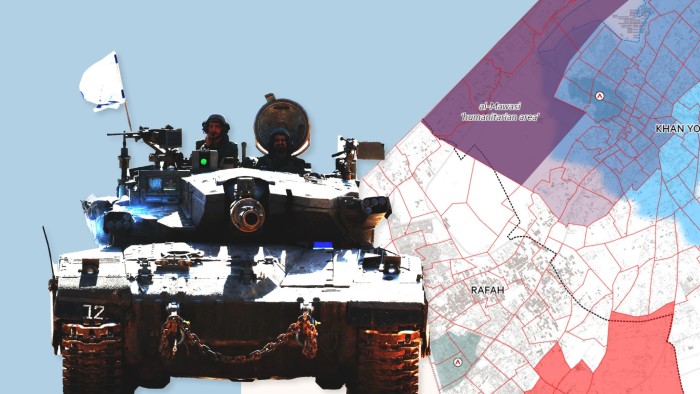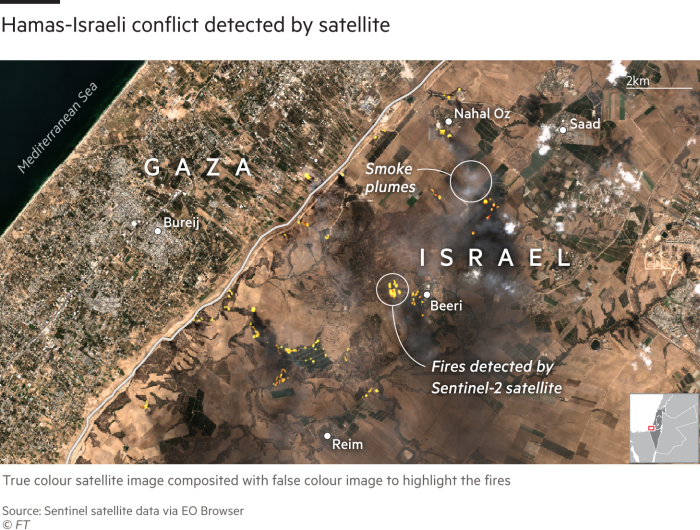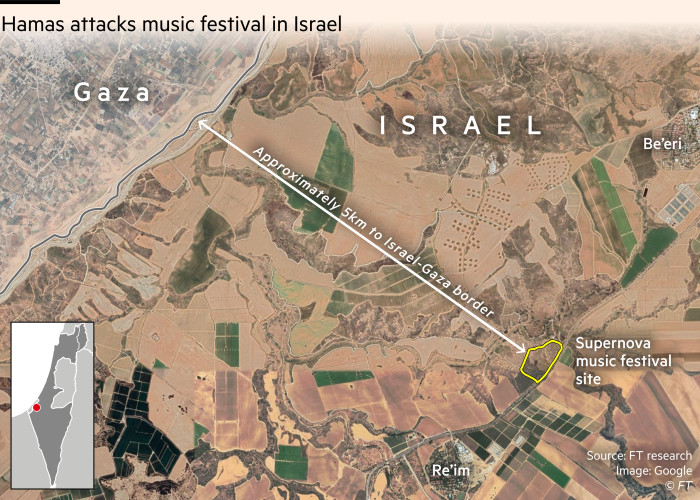The Israel-Hamas war in maps and charts

Unlock the Editor’s Digest for free
Roula Khalaf, Editor of the FT, selects her favourite stories in this weekly newsletter.
Israel-Hizbollah
A US-brokered ceasefire between Israel and Hizbollah appeared to be holding on Wednesday, raising hopes that some of the civilians displaced by the conflict would be able to return home.
The 60-day deal was described by US President Joe Biden as “designed to be a permanent cessation of hostilities”.
Lebanese and Israelis have been displaced by the fighting, which was triggered when Iran-backed Hizbollah began firing into northern Israel in the days after Hamas’s October 7 2023 attack from Gaza.
But in a sign of the fragility of the deal, the Israel Defense Forces warned residents of southern Lebanon on Wednesday not to return to their villages or approach Israeli forces and forbid travel south of the Litani river at night.
Israel-Hamas
The IDF launched air and land offensives in Gaza in response to Hamas’s deadly October 7 cross-border assault in southern Israel.
Hamas killed more than 1,200 people and seized about 250 hostages, according to Israeli officials, who say around 100 hostages remain in captivity.
After October 7, the IDF moved into northern Gaza before sweeping south towards Khan Younis and then Rafah. More than 2mn people in Gaza have been displaced by the conflict, with many leaving Rafah and some moving to al-Mawasi or other IDF-declared “humanitarian areas”.
The death toll from Israel’s offensive in Gaza passed 43,000 in November, according to Palestinian health officials and data from UN OCHA.
Around 640 Palestinians in the West Bank and about 1,900 Israelis and foreign nationals in Israel have been killed since October 2023, according to data from UN OCHA and Israeli human rights group B’Tselem.
Humanitarian workers inside Gaza have also faced significant danger during the conflict, with an unprecedented number being killed.
Food and water insecurity in Gaza
The flow of aid into Gaza has hit its lowest level since the start of the war.
Aid deliveries containing urgently needed food, water and medical supplies have not been entering Gaza at their usual levels since the war began, but shortages worsened after IDF troops took “operational control” of the Palestinian side of the Rafah crossing in May.
The US built a $230mn floating pier to get more aid into Gaza, but shipments were affected by storms and poor sea conditions, leading to the project being mothballed in July.
The IPC, an international panel of experts who monitor food insecurity, has warned that the entire Gaza strip is at risk of famine, particularly in the north where Israel has blocked the entry of supplies almost completely.
Since Israel launched its Gaza offensive, damage to infrastructure and lack of fuel and electricity have also led to a severe water shortage.
Before the war, Gaza sourced most of its water from an underground aquifer or from Israeli state-owned water company Mekorot. According to an UN OCHA report, two of the Mekorot pipelines have been closed and the third is operating only partially.
Meanwhile, only one of the six wastewater treatment plants and two out of three desalination plants are partially working.

Infrastructure damage in Gaza
According to damage assessments from researchers at the CUNY Graduate Center and Oregon State University, more than half of all buildings across the Gaza Strip have suffered damage, rising to nearly 80 per cent in Gaza City.
The damage in Khan Younis and Rafah has also increased as Israel expanded its offensive from northern Gaza to the rest of the territory.

October 7 attack
Hamas militants launched a multipronged dawn assault on Israel from the Gaza strip on October 7 2023.
The attack began in the early hours of the morning on the Jewish holiday of Simchat Torah, with thousands of rockets fired at Israeli towns and cities. Many were intercepted by Israel’s Iron Dome defence system, but satellite imagery showed fires and smoke rising from locations that were hit.

Hundreds of Hamas fighters simultaneously attacked by land, air and sea, breaching the fortified barrier between Gaza and Israel.
Militants used motorised paragliders to attack the Supernova music festival, which was taking place not far from the Gaza border. After flying in, they shot many Israelis and took others as hostages.

Armed Hamas fighters targeted Israeli communities and military sites at several locations, going door-to-door and performing execution-style killings as well as taking hostages.
More than 1,200 Israeli civilians and troops were killed on October 7, according to Israeli officials — making it the deadliest attack on the country since its foundation.
Visual and data team: Aditi Bhandari, Jana Tauschinski, Cleve Jones, Janina Conboye, Peter Andringa, Steven Bernard, Chris Campbell, Chris Cook, Sam Joiner, Lucy Rodgers, Ian Bott, Dan Clark and Alan Smith
#IsraelHamas #war #maps #charts











